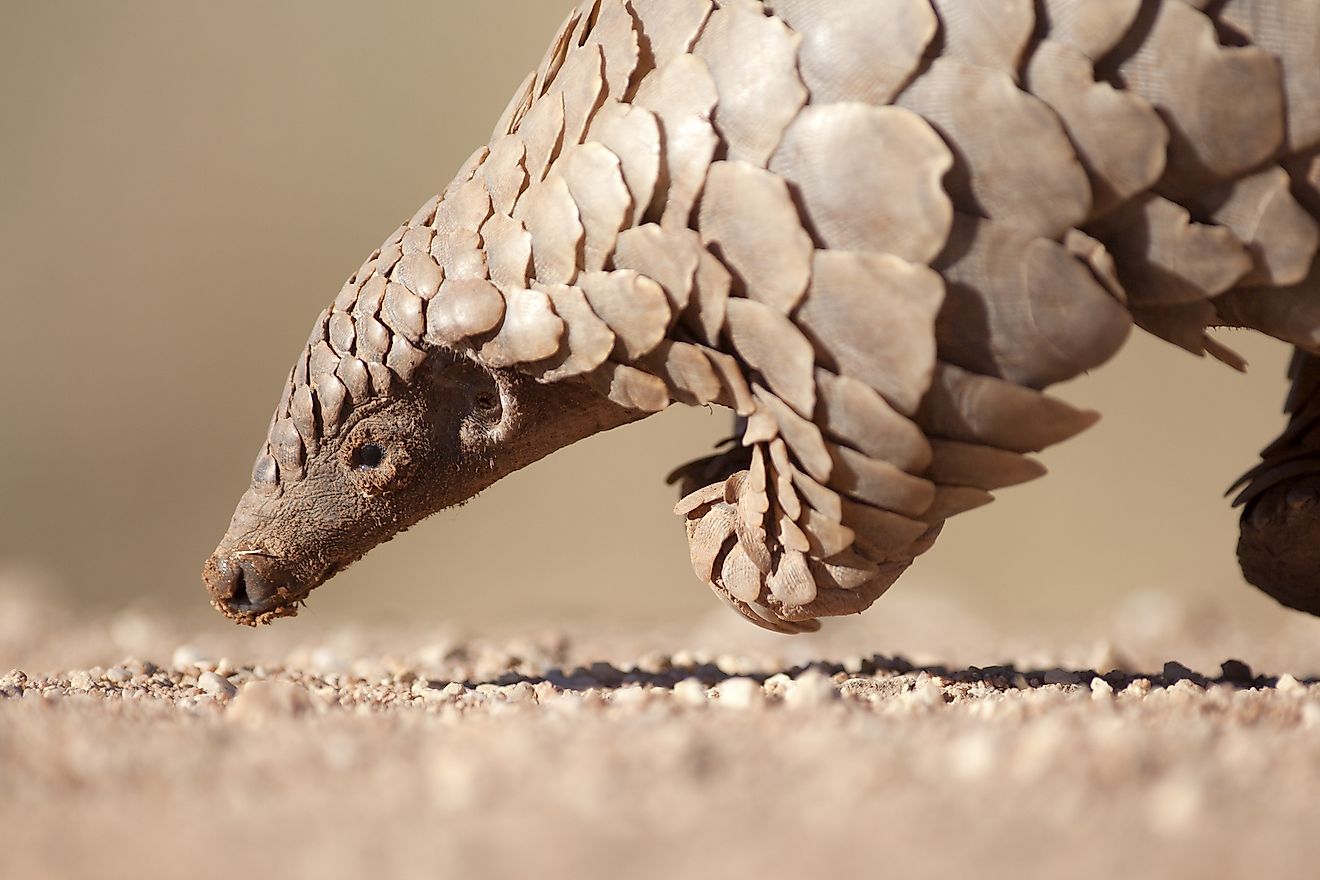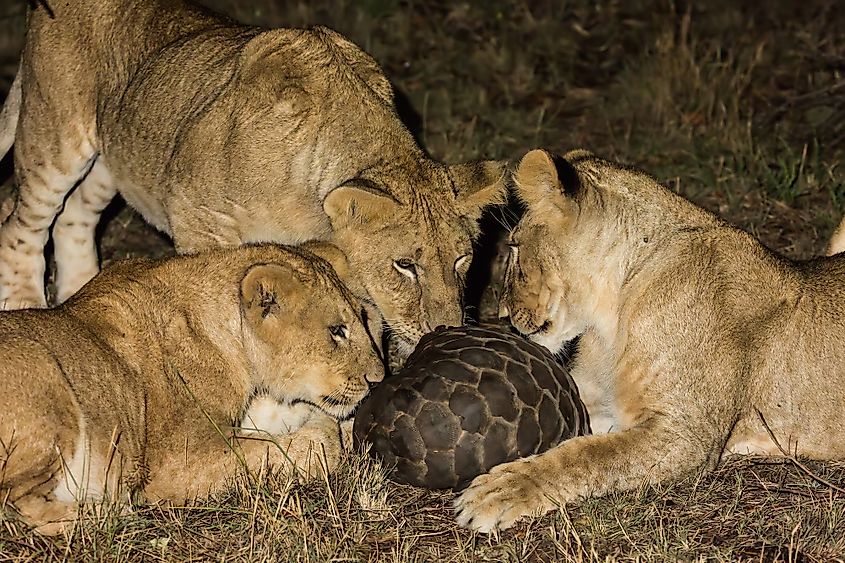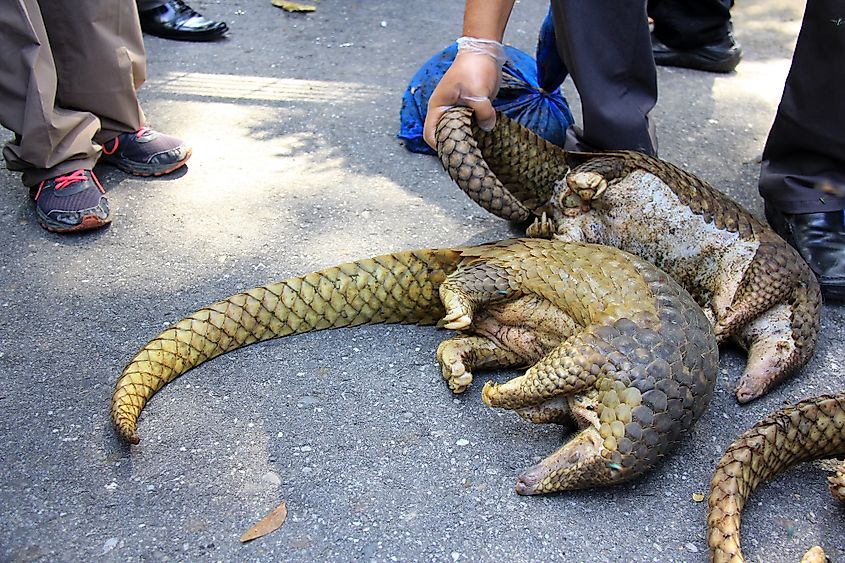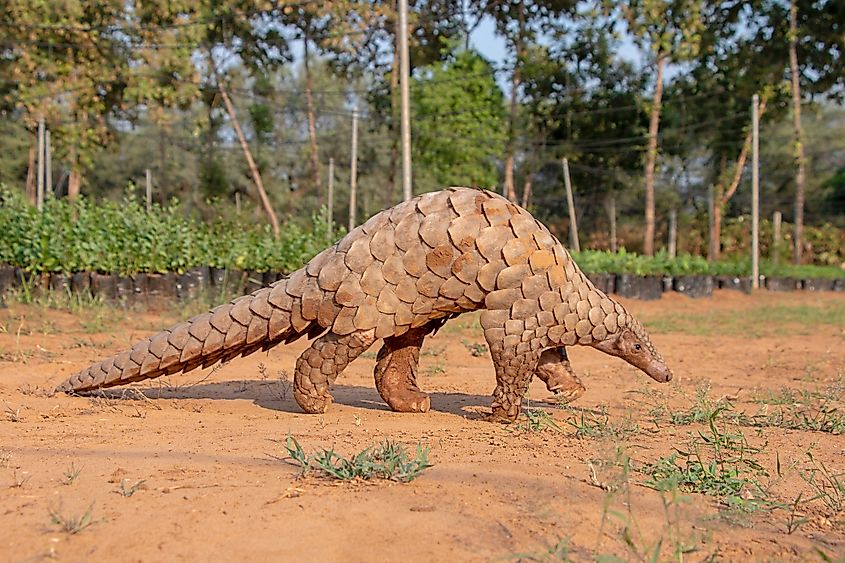World Pangolin Day Reminds Us That The Clock Is Ticking For The World's Most Trafficked Mammal

Lions with their four-inch long canines and a deadly bite are designed to kill. But sometimes even these apex predators surrender to the natural, impenetrable armor of the pangolin, a creature that weighs no more than 10 pounds but has a network of overlapping keratinous scales covering its whole body. When threatened, the pangolin curls up into a tight ball with the exposed scales deterring the predators. Unfortunately, however, this defense mechanism of pangolins is the cause of their demise in the hands of humans, making pangolins the world's most trafficked mammals.
The World Pangolin Day observed on the third Saturday of February each year (this year on February 20) is a reminder of the sad plight of these creatures and the urgent need to speed up conservation efforts to protect them.

All Pangolin Species Are Threatened
There are 8 extant pangolin species with four each distributed in Asia and Africa. All species are globally threatened.
1. Pangolins In Asia
- Indian pangolin (Manis crassicaudata) - Endangered
- Chinese pangolin (Manis pentadactyla) - Critically Endangered
- Sunda pangolin (Manis javanica) - Critically Endangered
- Philippine pangolin (Manis culionensis) - Critically Endangered
2. Pangolins In Africa
- Giant Ground pangolin (Smutsia gigantea) - Vulnerable
- Temminck's Ground pangolin (Smutsia temminckii) - Endangered
- Black-bellied pangolin (Phataginus tetradactyla) - Vulnerable
- White-bellied pangolin (Phataginus tricuspis) - Endangered
The World's Most Trafficked Mammal
Pangolins and their body parts are in great demand in parts of Asia, especially China and Vietnam. These animals are poached and illegally trafficked for their scales, meat, and skin. Scales are used for traditional Asian medicine preparations while their meat is considered a delicacy and sells at a high price. Pangolin skin is also used in manufacturing luxury fashion products. Adding to the threat of poaching is the wanton destruction and deterioration of pangolin habitat in most parts of their range in both Asia and Africa. Pangolins are now nearly extinct in China and parts of Southeast Asia while populations in Africa are steadily plummeting due to illegal trafficking by organized transnational criminal groups.
Despite Protections, Illegal Trade In Pangolins Continue

By 2016, the pangolin numbers had fallen so drastically, that international commercial trade in pangolins was banned and all pangolin species were placed in Appendix I of the Convention on the International Trade in Endangered Species (CITES). However, a shocking report in 2019 revealed that the ban alone was hardly effective. Law-enforcement seizures of pangolin scales and meat were at an all-time high at 128 tons globally in 2019, a 200% hike from 5 years earlier.
The prediction of pangolin experts also turned true. With the Asian species nearly driven to extinction, the traffickers now focussed their attention on the African species with West and Central Africa becoming major hubs of illegal trade in pangolins.
Pangolins In 2020 And The Covid-19 Pandemic
Species that were once hardly a matter of concern for the masses were suddenly brought to the limelight in 2020 when pangolins were suspected as one of the reservoirs of the coronavirus that killed millions across the globe. On several occasions, scientific studies discovered links between coronaviruses living in pangolins and the Covid-19 coronavirus (SARS-CoV-2). As recently as February 2021, a scientific study published in Nature Communications became the only study to provide serological and molecular evidence that pangolins harbor SARS-CoV-2-related coronaviruses. Whether pangolins were eventually the direct or indirect source of the novel coronavirus that triggered the pandemic is yet to be known. However, the pandemic did bring to notice the plight of these animals at a global level and also taught a lesson about the need for humans to maintain a respectable distance from wildlife and wild spaces. The association of traded pangolins and other wildlife with the pandemic also prompted the Chinese government to take action. On February 24, 2020, China announced an immediate ban on trading and eating wild animals. Wild animal markets were shut down across the country giving new hope to pangolin conservationists about the future survival of the species.
A later report by the Environmental Investigation Agency (EIA), however, dashed all such hopes. It revealed that online sales platforms continued to advertise pangolin products while some major pharmaceutical companies in China offered to sell similar items directly on their websites. The report cautioned that such loopholes need to be immediately closed by China to protect the pangolins.
News Is Both Good And Bad

Pangolin trafficking continues to occur with reports of seizures surfacing on a frequent basis since the beginning of 2021. In January, Nigeria Customs Service intercepted pangolin scales weighing 8,800kg heading for Haiphong, Vietnam. Recently, forest officials recovered a pangolin and its pup from traffickers in the Mumbai-Goa highway in western India while 4 kg of pangolin scales were confiscated from smugglers in West Bengal in the eastern part of the country. These events bear proof of the fact that pangolin trafficking continues unabated even after the world suffered such a lethal pandemic.
Not all news is bad, however. Pangolin conservation success stories are also widespread. India is taking stern actions to protect the pangolins in the country. On February 14, 2020, in a joint effort, the forest department of the Indian state of Madhya Pradesh state and the Wildlife Conservation Trust, an NGO working in the field of wildlife conservation in the country, radio-tagged two Indian pangolins for the first time. It would help them study the ecology of the species and devise future conservation plans to save it. India also managed to crack down on pangolin poaching in several instances and an Indian female officer, Sasmita Lanka, received the United Nation's Asia Environmental Enforcement Award for her exceptional work in busting pangolin smuggling rackets.
In December 2020, a study published in the journal Global Ecology and Conservation gave new hope to pangolin conservationists. The Philippine pangolins believed to be almost extinct were spotted in 17 of the 24 municipalities in Palawan, the Philippine island province that is the only known home to the species in the world. The discovery suggested that there was still time to save the species.
Conservation activities in Africa are also giving new life to the continent's pangolins. For example, local conservationists in South Africa’s KwaZulu-Natal province have helped reintroduce the Temminck’s pangolin in the province decades after its local extinction from the area.
The pandemic has also forced governments and policymakers previously ignorant towards pangolins and other wildlife to take action to curb the illegal wildlife trade.
In the end, experts agree that it is the demand for pangolin products that fuel the killing of these animals and must cease to exist to ensure a secure future for the pangolins.











